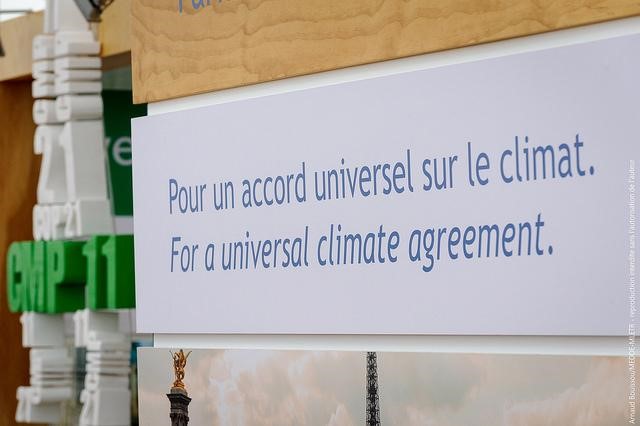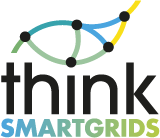The COP21 summit, to be held in December this year, takes place at a crucial time in the history of efforts to combat climate change: awareness of the issue is now widespread and fossil fuel substitution technologies, including Smart Grids, have made incredible progress. Smart Grid initiatives and projects are explicitly mentioned in the “planned contributions determined at national level” of several states. An overview of the Smart Grids commitments in the agreement under negotiation.

Poster of the site of COP21 – Photo : Flickr, Ciau in CC
The Conference on climate change aims principally to enact three main objectives:
- Commitments and national plans for the reduction of CO2 emissions post 2020.
- A unilateral agreement (still under negotiation) which will define the global trajectory of emissions and the mechanisms of verification and revision. This includes the intermediary meeting that will allow the resolutions of the questions that have not been resolved. For the 195 signatory countries, consensus still needs to be found over a number of issues.
- The financing of the Green Fund. The aim of this Fund is to channel funds from developed countries to projects of adaptation and mitigation of the effects of climate change in developing countries.
A green fund and technologies to reduce greenhouse gasses
The goal that states have set themselves is to finance the fund to the tune of $US 100 billion a year between now and 2020. With $US 10.2 billion in pledges, the fund is now operational and will be used to fund projects as of 2016. For the French president “the challenge of the Paris conference is not simply to set standards and limitations but also to make a great technological wager not to be afraid to share technology. If countries are not convinced that there will be a new cycle of development thanks to the technologies that we can share, these countries will not get engage”. This green fund should be used to fund projects that are aimed at reducing the greenhouse gas emissions of developing countries (low carbon transport, reduction of emissions from buildings, sustainable management of land and forests) but also to allow to allow the most fragile states to adapt to climate change (reinforced resilience of food production, water, healthcare systems, and infrastructure and ecosystems). Smart grid projects are also expected to emerge in this area.
Smart Grids in the « Intended Nationally Determined Contributions (INDCs)»
On 1st October 146 countries (86% of global emissions) had made public their national commitments. These commitments are formalised through “Intended Nationally Determined Contributions (INDCs). This is a new kind of instrument in the context of the United Nations Framework Convention on Climate Change (UNFCCC). In advance of the conference, it allows states to present national plans in the context of efforts to combat climate change. Each state presents budgeted elements (base year reference, period of engagement), methodologies used to estimate greenhouse gas emissions and an implementation schedule.
Whereas certain states, like the United States and the European Union, are content to state very general objectives, others, mainly the BRICS, describe in considerable detail the means employed to achieve these objectives.
Brazil for example plans to implement Smart Grids and the installation of smart meters. Barbados and the Cap Verde mention in their INDCs the implementation of micro grids. Cameroon intends to deploy mini Smart Grids in rural zones. Belize for its part proposes to “upgrade its grid and electrical infrastructure in order to make it smarter, more unified and integrated”. Mauritius has announced “the modernisation of the national grid thanks to the use of smart technologies as a precondition to accelerate the adoption of renewable energies”.
Thailand has announced the existence of a “master plan for the development of Smart Grids 2015 – 2036” but regrets the lack of advanced technical knowhow and coordination capacity” for its implementations.
In its INDC contribution the Chinese government commits itself to reaching the peak of its CO2 emissions around 2030 and to lowering CO2 emissions by units of GDP compared to its 2005 level. In support of these measures China will deploy a whole series of measures ranging from reforming the legislative framework to the construction of a national smart grid. China has already spent $US 4.3 billlion in smart grid investments in 2013. These investments are expected to increase to meet the challenges of a carbon free economy and with respect to the objectives it has set under the COP21 agreement.
ITEMS International pour Think Smart Grids



